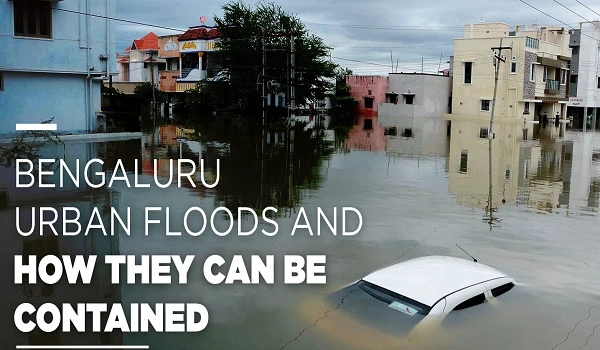Does The Area Flood? Why Bengaluru Homebuyers Now Ask This First In 2025

In 2025, more people buying homes in Bengaluru are asking a simple but serious question: Does the area flood? After several heavy rains in recent years, even posh neighborhoods and tech hubs have seen roads under water, traffic jams, and homes flooded. This has changed how people look at property. It's no longer just about fancy gyms or big balconies—safety and drainage matter more than ever.
Bengaluru used to be known for its nice weather and peaceful lakes. But over the past few years, the city has started flooding every time there's heavy rain. In May 2025 alone, some parts got more than 120 mm of rain in just one day. That caused traffic jams, water entering homes, and huge losses for families and businesses.
Flooding doesn't happen everywhere, but certain parts of the city are hit often:
- Bellandur, Marathahalli, Yemlur, and Kadubeesanahalli: These are near Outer Ring Road and full of tech parks and apartments. But they flood easily.
- Whitefield and Sarjapur Road: Known for good housing options, but some inner roads fill up fast after rain.
- Manyata Tech Park and Mahadevapura: Offices stay dry, but nearby homes see water on the streets.
- HSR Layout, Kengeri, Mysuru Road, and Koramangala: Low-lying spots flood often.
Even places like Billionaire Street, where homes cost over ₹25,000 per sq ft, have seen water problems. In contrast, projects like Birla Evara in Kodathi are drawing attention for being in better-planned zones with good drainage.
There isn't one single reason. It's a mix of old systems, bad planning, and rapid growth:
- Lakes and Drains Are Vanishing: Bengaluru had many lakes. Now, nearly 80% are gone. Many homes and offices are built on what used to be lake beds or streams.
- Stormwater Drains Are Blocked: Drains are often full of garbage or even covered by buildings. This stops water from flowing out.
- Too Much Concrete: New roads and buildings leave no space for rain to soak into the ground. Water just flows on top and collects.
- Old Drain Systems: The city's drains were designed for a smaller city. They can't handle today's rainfall.
- Climate Change: Rains are heavier now but happen in shorter bursts. This floods the city faster than before.
Flooding is now a real deal-breaker for buyers and investors:
- Lower Demand in Risky Areas: Places like Bellandur and Hennur are seeing fewer buyers. Brokers say demand is down 12–20%.
- Prices Not Growing: While most of Bengaluru saw about 8% price growth in 2025, flood-hit areas barely grew or even saw prices drop.
- Home Insurance Is Costlier: Flood-prone homes may cost more to insure, and banks are being cautious with loans.
- Buyers Want Safety First: Now, people want strong drainage, high plinth levels, and well-planned layouts more than fancy extras.
- New Favorites: Areas like Devanahalli, Yelahanka, and parts of Electronic City are getting more buyers because they're safer. Birla Evara is an example—it's gaining interest for being on higher ground and having better water management.
Authorities and developers know this is serious. Some steps being taken:
- ₹2,000 Crore Budget for Drains: The government is fixing many drains and says work is ongoing in over 160 problem areas.
- Clearing Encroachments: Over 2,600 illegal buildings built on drains have been removed.
- Lake Cleaning Projects: ₹234 crore has been set aside to revive Bellandur and Varthur Lakes.
- Basement Parking Ban Proposed: In flood zones, basement parking may be banned to prevent cars from being damaged.
- Smart Flood Sensors: The city is testing real-time flood alert systems.
Some builders are now taking flood risk seriously. They're planning better drainage, raising buildings on higher plinths, and avoiding low-lying plots. Birla Evara is among the projects quietly setting this new standard.
If you're looking to buy a home in Bengaluru, here's what experts recommend:
- Check Old News Reports: See if the area has flooded before. Local news and social media groups can help.
- Use Google Maps History: Look at satellite images to see if the land was once a lake or wetland.
- Visit on a Rainy Day: Site visits are best when it's raining—you'll see real drainage conditions.
- Inspect Drains Nearby: Are they clean, big enough, and well-placed?
- Ask About the Builder's Past Projects: Have they had flooding issues before?
- Check for RERA Approval: Make sure the property is registered and follows city guidelines.
- Study the Land Layout: Check official maps to know if any streams or drains pass through the land.
In 2025, "Does the area flood?" is not just a question—it's a red flag. With climate change and rapid construction putting pressure on the city, buyers must be careful. Many are now choosing projects with better planning and flood safety, like Birla Evara in Kodathi. It's clear: in Bengaluru today, smart homebuyers look beyond the brochure—they check the ground beneath it.
| Enquiry |








